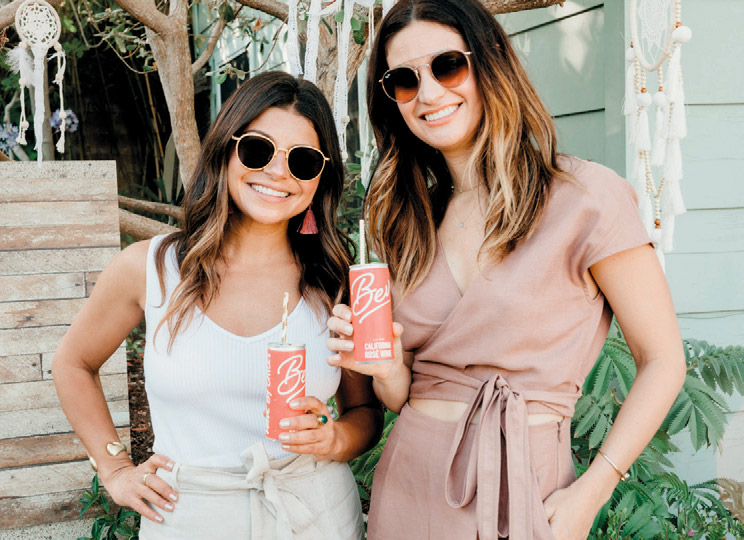Canned Wine - A Cultural Zeitgeist
The canned wine revolution may be sweeping the nation, but the very first canned wine came from right here in Northern California. The story goes that Frances Ford Coppola promised his young daughter, Sofia, that one day he would make her a sparkling wine. Sofia Blanc de Blancs debuted in 1999 at Sofia’s wedding to filmmaker Spike Jonze-in a bottle. The Family Coppola began selling the director, screenwriter, producer and former actress' namesake sparkling wine as “Minis,” packaged in pink 187-milliliter cans with straws attached, in 2003.
Despite the Hollywood royalty endorsement, canned wine didn't really catch on until about 10 years later. According to a March 2018 article on MarketWatchMag.com, one of the earliest validations of canned wine's meteoric rise came in 2016, when Nielsen channels reported a 125% increase in canned wine sales during the 52 weeks ending June 18,2016, bringing the category's total sales up to $14.5 million. That same article reports that in 2017, canned wine's dollar growth surged at a rate of 54% in the 52 weeks ending December 30, 2017, the highest of any alternative wine packaging. According to BW 166, a beverage alcohol market research firm, canned wines are now the fastest-growing category in the industry—up 43% from June 2017 to June 2018. Canned wine is now a $28 million industry.
Why are canned wines so hot “all of the sudden?” For one thing, the rise of craft beer has contributed to the production of better aluminum cans with polymer-coated interiors that eliminate the tinny taste long associated with canned food and beverages. For another, and probably the largest contributing factor, Millennials much prefer wine over beer.
A study published in 2016 by the nonprofit Wine Market Council found that Millennials drank 42% of the wine sold in the United States. And that they spent more per bottle than the overall population-17% of Millennials had paid more than $20 for a bottle of wine in the past month. Among all other age groups, that number was just 10%. And their selections tend to be more adventurous, with Millennials buying wine from places as varied as Oregon, Chile and Greece.
Case in point is Alix Peabody, the 28-year-old founder and CEO of Bev, a brand launched in 2017 to sell sparkling rose in a can. “Millennials are more health conscious, so less gluten, less sugar. And now, rose is a party drink,” Alix said in a telephone conversation.
Bev is based in Venice Beach, in Southern California, but the wine is currently made and canned in Sonoma County and will soon move production to Napa. They are tapping into the Zeitgeist of Millennial wine consumption, and pioneering in the space. “We are a digital, mission- first company,” Alix explained. “Most alcohol is branded for men-ours is female-centric. When you're holding a can, we want you to be holding empowerment, fun, excitement.”
Alix added “Consumers want interaction and immediacy. We've become an Amazon culture-when you get things the next day. But they also want community. That's what we are building around our brand.”
The rise of canned wines can be viewed as an indicator of how our society is changing in general. For many people, cans make wine approachable and fun-they're the opposite of the Robert Parker boys club of single-estate wines. They're more likely to be consumed at Coachella, a ladies’ book club or a beach bonfire than as part of an elaborate pairing menu.




